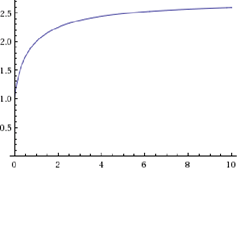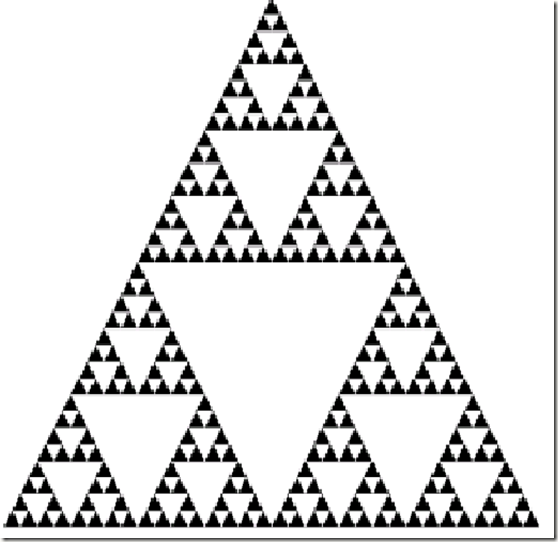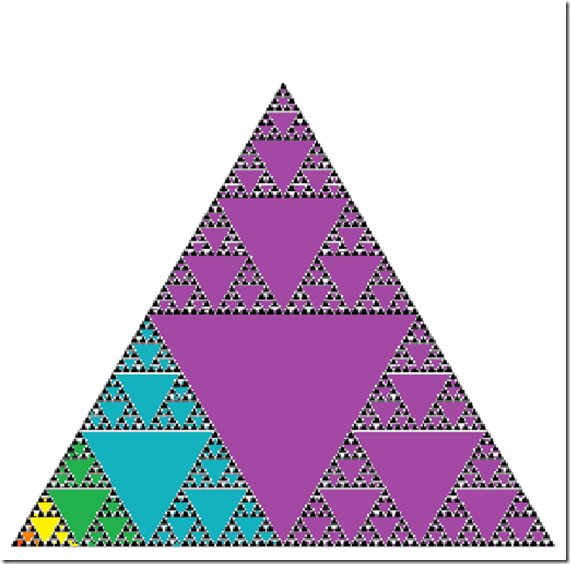-So now you're involving me?Yes, I am.
Now, to start: "What is a factorial?"
-A factorial? That's easy:
When you say x! (x factorial), you mean the multiplication of all integers bigger than 1 up to itself.
For example, 4! is equal to 2x3x4, or 24,
7! is equal to 2x3x4x5x6x7, or 5040,
and 15!=2x3x4x5x6x7x8x9x10x11x12x13x14x15, or 1,307,674,368,000.
-Whoa, factorials grow fast.
Yes, factorials do grow pretty fast. Here's a list of the factorials of some small integers:
- 0!=1
- 1!=1
- 2!=2
- 3!=6
- 4!=24
- 5!=120
- 6!=720
- 7!=5040
- 8!=40320
- 9!=362880
- 10!=3628800
A property about integer factorials is that (x-1)!=x!/x.
So if we make x equal to 1, 0!=1!/1, or simply 1.
-But what about -1!, or -2!, or...
If x=0, we eventually get that -1! is 1/0.
-1/0? That's a problem.
Next, if x=-1, we get that -2!=-1/(1/0), but...
-That is equal to -1/1 * 0/1, or... 0!
That should be right, but calculators will give the answers for all of these values as "INFINITY" or "NEGATED VALUE".
-But we can still try to get our own values, can we?
Actually, that's what M2C2A is all about. And using this formula, -3! should be 1/0, and -4! should be 0...
-But what about 1.5!, or 7.345!?
Luckily, I don't have to figure that out, because for positive integers, there is a formula for factorials. For positive numbers, it is:
∞
(z-1)!= ∫ tz-1 e-t dt
0
-WHAT THE...?!
Don't worry, we'll examine the formula one by one part.
-But wait, why (z-1)! and not z!?
(z-1)! is the same as Γ(z), pronounced as "the gamma function of z".
- Next, what is that thing that looks like a "s"?
It is an integral. It is used mainly in calculus.
-WAIT? ARE WE GOING INTO CALCULUS RIGHT NOW?
Yes. We're going into calculus right now.
-Aww...
Don't worry, it isn't as bad as you think.
-Yeah you say so...
I really don't think it's going to WHOA-RK!
Where are we now?
A world, a very strange world, could be seen. It was a line.
We're in the graph of 2x=y
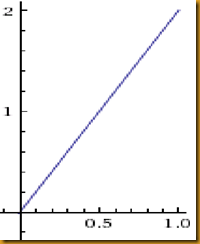 . And we're going to get the integral of this.
. And we're going to get the integral of this. First, to write "the integral of 2x=y", we're going to use only "2x".
-BUT WHAT THE WHAT, WHERE, OR WHO IS AN INTEGRAL?!
It is only the calculation of the area between the line of a graph and the x-axis.
-Please speak English.
What I said only means this!
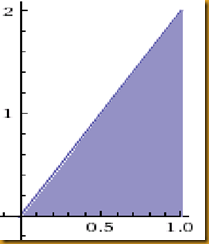
Suddenly, the graph started shaking, and from nothing, something blue appeared, between the bottom line, and the previous line.The line at the bottom just turned out to be the x-axis. And we need to calculate the area that is below the blue line.
-But what is our range?
Here, x will go from 0 to 1, and we need to get the area of the triangle below 2x=y, or simply, 2x, so we can write this as:
1
∫ 2x dx
0
The 0 and the 1 specify the range, 2x represents the equation for which we will find the area, and dx only specifies the variable (after the d), x.
So, using the formula for the area of a triangle, because the width is 1, and the height is 2, the integral equals...
-1!
Correct, it equals 1. But that would actually be cheating, for how do we get the integral for something more complicated. For example:
1
∫ 4x^3 dx
0
-Hey! It is impossible to define that! The equation isn't a geometrical shape!
That's right...
But incorrect.
A whistle was heard. Suddenly, a seemingly never-ending stampede of something could be heard at a distance.-Paper strips?!
That something was:
Each paper strip accommodated itself in the graph. They had base 0.25 and height that would accommodate to the graph's height. But many of the graph's space wasn't filled.
-We can't use you to calculate the area, or can we?
We can! Make the base smaller!
Suddenly, the paper strips started to shrink their base to 0.10. But that wasn't enough.-Shrink even more!
Wait. Couldn't we make the base 0 so everything could fit perfectly?
-No. Or else the area of the strips will disappear!
Exactly! You are beginning to understand infinitesimal calculus!
Let's make the area x:
lim
x->0
-And I thought I had it! What the heck is that?
Don't worry. That only means that x is ALMOST 0, but not exactly.
That is:
THE BASE OF THE STRIPS IS INFINITESIMALLY SMALL.
-But, what is the total area?
The total area is equal to:
1/z
Σ 2kz^2
k=1
-But what is z?
The variable "z" is the base of the strips.
-And what does the formula mean?!
Σ means that we will be doing a summation, that is, make the variable specified on the lower range, k, be 1, calculate, be 2, calculate, add the previous result... The range of k will be from 1 to 1/z. That is because if the base of the strips is z and we need the value of all the strips bases together to be 1, then the number of strips is 1/z. For example, if our bases measure 0.0625, then the number of strips is 16.
-I get it. But why kz^2?
If the base is z, so the strips adjust to the formula the most possible, their height must be kz, and their area, kz*z=kz^2.
-But what do we do with the values?
First, let z be 0.5 just for this example. Now, the upper range is 2. If you calculate 2kz^2, which is...
-0.5!
...and then let k equal 2, calculate kz^2, and add it to your previous result, you get:-1.5!
Now, if you make z equal 0.25, you will eventually get:...-1.25!Now, let's try for z, 1/50. The answer is:....................-1.02!
And when z=1/9874564?
...................................................................-AGRH!!! THERE MUST BE AN EASIER WAY!
Answer: There is!
Any series that starts in 1 and involves addition (for example, 1+2+3... +99+100) can be expressed as the following formula (x is the last number):
x
Σ k= (x+x^2)/2
k=1
So 1+2+3+4+5=(5+25)/2, or 15, 1+2+3+4+5...+99+100=(100+10000)/2=5050 and 1+2+3+4+5...+9876543209+9876543210=(9876543210+97546105778997104100)/2=48773052894436823655. So...
1/z
Σ 2kz^2
k=1
...is just equal to...-WAIT! THIS ONLY APPLIES WHEN YOU ADD CONSECUTIVE NUMBERS!
Yes, but we can use a property of summations:
b b b
Σ cd=c Σ d = d Σ c
k=a k=a k=a
For example,
3 3
Σ 3k = 3 Σ k = 3+6+9=3(1+2+3)=3*1+3*2+3*3=3+6+9✓
k=1 k=1
Understood?-Mainly.
Try to see clearly that set of equations and see if you can figure that out.
In the meantime, we can make
1/z
Σ 2kz^2
k=1
Into
1/z
2z^2 Σ k
k=1
Into
2z^2(1+2+3...+1/z)
Into
2z^2(1/z+(1/z)^2)/2
Into
z^2(1/z+1/z^2).
Into
z+1!
And that is our general equation!
If we make z=0.5, the equation spits:
-1.5!
If we make z=0.25, the formula says:-1.25!
If z=1/50, then the formula says:
-1+1/50!
And if z is infinitesimally long, then the formula says:
-1!
But why?
Let's recall the length is z.
So the total area is:
z+1
Now, let's say z is so close to 0, we can almost treat it like 0.
So z+1 could be treated as 0+1 or:-1!
That was very interesting, but what do we do with:
∞
(z-1)!= ∫ tz-1 e-t dt
0Answer: Use a calculator!
Why?: Because it may be one of the most ridiculous calculations ever!
See you next time!
-The Roaring Thunder



